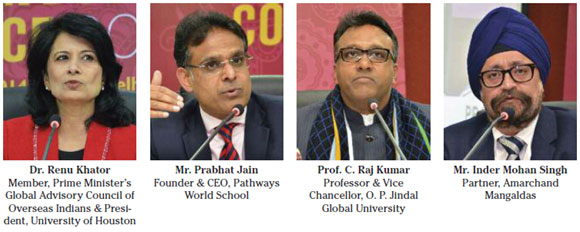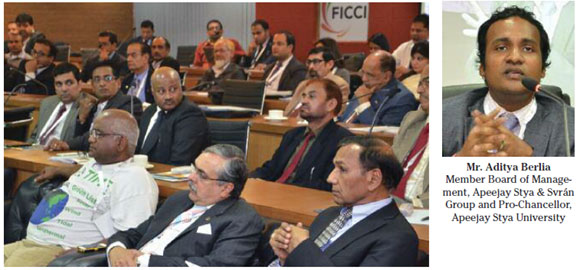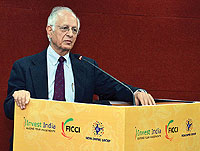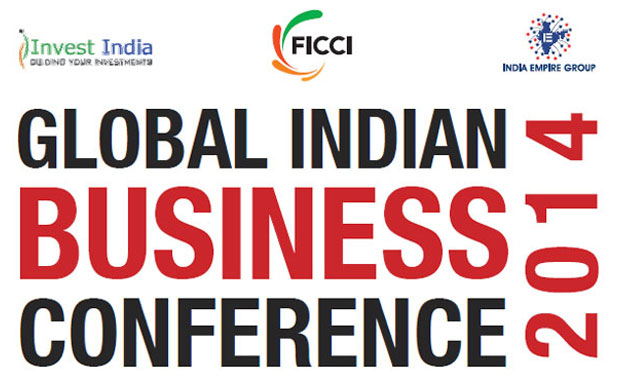Global Indian business conference 2014


Dr. Khator outlined three recommendations of the PMGAC-OI that includes a need for a culture of research and innovation. She emphasized that thought should be given to using cutting-edge technology to engage the Indian diaspora in non-traditional ways, such as facilitating addresses by international faculty through video chat and other technological platforms. Even though the education revolution is already on India’s doorsteps, the technology that needs to back it up is disrupted and not often in place. She reiterated that the focus in India ought to be on accumulating world-class talent and providing access to quality education. Quality, she said, is important at every level.
Mr. Jain mentioned that India’s education sector is on a fast growth track given that 50% of the population in India is below 25 years of age. He felt that the need of the hour is for education systems to penetrate the vast swathes of the country’s rural landscape. While this requires concerted effort from both the government and the private sector, Mr. Jain felt that at present it somehow does appear that there is a trust deficit on the part of the government when it comes to acknowledging the private sector’s growing role in this sector. He said that it is time to allay fears as several top business and medical schools are today in the private sector. Maintaining a positive note throughout his moderation of the session, Mr. Jain believed that the winds of change are truly blowing.
Mr. Berlia said that information technology alone was not going to solve the problems of the sector. Instead, it was time to introduce highly innovative business practices by utilizing a limited number of training resources. The sector should work closely with institutions such as the National Skill Development Council and allied bodies that are willing to invest. He remained skeptical about great markets emerging in the next few years in the higher education sector, emphasizing that out-of-the-box thinking and innovation would be required before investment decisions are made.
Prof. C. Raj Kumar said that the good news for India is that out of 1.2 billion people, 65% are below the age of 35, and that makes it a staggering 780 million. While the world ages, India remains young. He said while the education sector was booming, no Indian university is among the top 10 universities of the world, adding that India’s regulatory mechanisms are not progressive and that there is a need to establish more universities for higher education. One of the worrying signs, Prof. Raj Kumar said, is that young people do not want to choose teaching as a profession and, therefore, there is a paucity of trained educational personnel. There are 700 universities and 40,000 colleges in India, but there is a huge shortage of faculty. The possibility of international engagement has been reduced due to limited issuance of visas to foreign scholars who would like to come and work in India. He felt that those who were looking for immediate returns should not be investing in the sector, but also added that the focus is shifting towards international collaborations.
Mr. Inder Mohan Singh said that several initiatives are being taken in the education sector and there is no restriction in the private sector for investment for profit. The Government of India permits 100% FDI in the education sector under the automatic route. The challenges on the regulatory side are that it can only be run by a non-profit institution under the current act. FDI in the infrastructure space is permitted in the education sector on a profit basis.
VALEDICTORY
 The valedictory address was given by Mr. Arun Mair, Member, Planning Commission. Mr. Maira said that while plenty of policies were in place, a trust deficit did exist between government and investors since the latter was skeptical about the implementation of those policies.
The valedictory address was given by Mr. Arun Mair, Member, Planning Commission. Mr. Maira said that while plenty of policies were in place, a trust deficit did exist between government and investors since the latter was skeptical about the implementation of those policies.
He said that the Indian diaspora could partner through the India Backbone Implementation Network (IbIn) that was conceived under the 12th Five-Year Plan to bring organizational capabilities together to collaborate, coordinate and implement issues, projects and policies for the country’s development. The larger objective of the IbIn is to promote wider capabilities in the country to systematically convert confusion into coordination, contention into collaboration and intentions into implementation. This institutionalized backbone capability will provide tools and techniques to different stakeholders to ensure effective and efficient coordination, design and implementation.
Despite the many projects and implementation challenges all over the country, such an organization will comprise a lean central node catalyzing many regional or local nodes to ensure an ecosystem that is widespread in its reach and far-reaching in its applicability.











Comments.